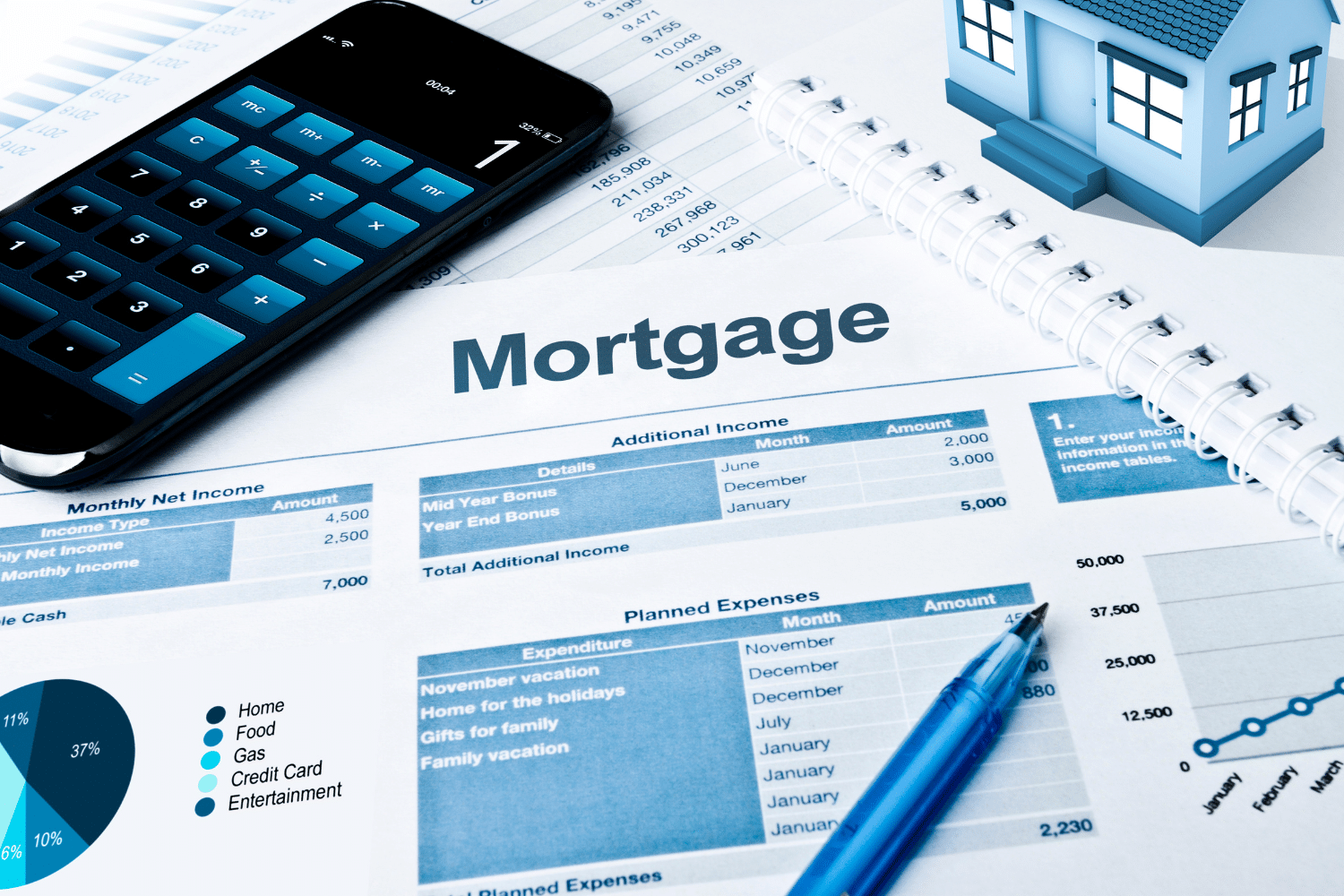Imagine a path to homeownership with rent-to-own. Live in your dream home while building credit. Save for a down payment at the same time. It’s not too good to be true. It’s a real option, called rent-to-own. This method differs from traditional home buying. It’s ideal for those not ready for a mortgage. But how does it work? Is it the right choice for you? Let’s explore and find out.
Key Takeaways
- Rent-to-own agreements offer potential homebuyers the flexibility to test drive their future home and build equity while working towards homeownership.
- It is important to understand key components of rent-to-own, such as option fees, rental credits, and legal considerations when making an informed decision.
- Evaluate personal circumstances carefully before deciding if a rent to own agreement makes sense for you.
Understanding Rent to Own Homes

In a rent-to-own arrangement, tenants lease a property with a buy option after one to five years. This process lets tenants test-drive their potential future home. They gradually work towards homeownership. During the lease term, part of each rent payment goes towards the purchase price. This method builds equity in the home.
Rent-to-own is popular in tough real estate markets. Homeowners use it when they struggle to sell directly. It’s often called rent to own work. This approach appeals to those with low credit scores. It suits those with unstable financial histories. They might not qualify for traditional mortgage loans currently.
Navigating Rent to Own Home Agreements

Understanding key elements of a rent-to-own agreement like the rental agreement, option fee, and rent credits is a necessary step before entering such contracts. Further on, we will detail each component and guide you on managing these agreements effectively.
The Rental Agreement
A rent-to-own rental agreement typically consists of a standard lease agreement and an option to purchase the property. Before signing such an agreement, important steps should be taken to ensure the property’s condition and value. This includes obtaining an independent appraisal, arranging for a home inspection, and verifying that property taxes are current.
In a rent-to-own situation, the rental agreement differs from a traditional lease as it encompasses both a rental and a purchase agreement. This means that while renting the property, there’s also the option to purchase it at a later date. The rental agreement serves as a legally binding contract safeguarding the rights and responsibilities of both the renter and the owner during the agreement.
The Option Fee
The option fee is a single, typically nonrefundable, payment made by the buyer to the seller prior to the agreement. This fee serves to:
- Protect the availability of the home while you are leasing it, preventing any other purchases from occurring
- Give you the option to purchase the home
- Apply the option fee to the purchase price if you choose to buy the home.
The option fee is usually determined by the buyer of a property. It normally ranges from 1 to 5 percent of the total purchase price. It’s important to remember that this fee is nonrefundable, so if you decide not to buy the property at the end of the lease, you will forfeit the option fee. However, if you do decide to buy the home, the option fee can go a long way in reducing the final purchase price.
Applying Rent Credits
Rent credits are portions of monthly rent payments that can be applied towards the final purchase price. In rent-to-own agreements, a portion of each rent payment, also known as rent money, is allocated as a credit towards the eventual purchase price. Rent credits are typically calculated as a percentage of the monthly rent, generally between 25% and 30%, and are applied towards the down payment of the property.
Remember that rent credits are limited to the past 12 months. Not all rent-to-own contracts include rent credits, their inclusion is contingent on the agreed terms between the landlord and tenant. Grasping how rent credits function and their effect on your future down payment is key when contemplating a rent-to-own arrangement.
Lease Option vs. Lease Purchase: A Comparative Analysis
When exploring rent-to-own opportunities, you will likely encounter two primary types of contracts: lease-option and lease-purchase agreements. A lease-option agreement offers tenants the flexibility to opt out of purchasing the property if they so choose. However, should the tenant decide not to purchase the property, they will forfeit the option fee and rent credit associated with the lease-option agreement.
In contrast, a lease-purchase agreement is a contractual arrangement wherein the tenant is obligated to purchase the home at the termination of the lease period. Should the tenant fail to secure funding by the end of the lease term, they will forfeit their exclusive claim to the home and all the rent credit they have accrued. Additionally, the homeowner may take legal action against the tenant for breach of contract.
Comprehending the differences between these two types of rent-to-own agreements and prudently deciding the one that fits your needs is necessary. Consulting a real estate attorney can assist you in handling the intricacies of these contracts and assure that your decision is well-informed.
Steps to Acquiring a Rent to Own Property

Acquiring a rent-to-own property involves several steps in the rent to own process, from assessing the property’s fair market value to fulfilling the terms of the rent-to-own agreement.
We will detail these steps further down in the text.
Assessing Fair Market Value
Determining the fair market value of a rent-to-own property is crucial to ensure a reasonable purchase price. An independent appraisal will provide an accurate assessment of the property’s value and help both the buyer and seller negotiate the purchase price. To establish the fair market value of a property, consider a range of factors such as current market trends, appraisal value, and the price people would be willing to pay for it in an arm’s length transaction.
There are a number of online tools available for assessing the fair market value of a home, such as Zillow, Bankrate, and Rocket Mortgage. These tools utilize various data points and algorithms to provide an estimate of a home’s value. However, it’s important to remember that these estimates are just that – estimates. Consulting with a licensed appraiser can provide more accurate and reliable information on the property’s true value.
From Tenant to Homeowner
Transitioning from tenant to homeowner in a rent-to-own agreement involves fulfilling the terms of the agreement, which typically includes signing an initial agreement outlining the home’s purchase price, rent payments, and responsibilities of both parties. A final contract must be signed, stating the final sales price of the home or the agreement to pay fair market value for the home.
If the decision is made to proceed with the purchase, a home loan must be obtained through a qualified mortgage lender. The standard home buying process must be followed, including inspections, appraisals, and closing procedures. By successfully completing these steps, you will transition from a renter to a proud homeowner.
Financial Considerations in Rent to Own Situations

Rent-to-own situations come with unique financial considerations, such as monthly payment structures and the impact on future down payments.
We will detail these financial aspects further on.
Evaluating Monthly Payment Structures
Understanding the monthly payment structure in a rent-to-own agreement is crucial for effective financial planning. Monthly payments typically include:
- Rent payment
- Option fee
- Rent credit
- Purchase price
Rent-to-own contracts determine the monthly rental price based on factors such as the percentage of rent allocated to the down payment, the property’s current or predicted value at the end of the lease term.
In these contracts, renters contribute to the down payment or purchase price by making additional payments towards the purchase price, known as rent credits or option fees. These contributions can be applied towards buying the property when the lease term ends.
The Impact on Future Down Payment
Rent credits significantly impact the down payment required for a property in a rent-to-own agreement. These credits, a portion of the rent payments, accumulate over time, helping the tenant save for a down payment and making it easier to qualify for a mortgage in the future. The buyer usually pays an ‘option fee’ in advance in a rent-to-own agreement, typically between 2% and 7% of the home’s value, which serves as the down payment at the lease’s conclusion.
While rent credits offer a great way to save for a down payment, not all of them apply to the down payment on a rent-to-own property. It’s important for tenants to understand the terms of their rent-to-own agreement and how rent credits will affect their future down payment, as they may still need additional funds for the down payment.
Legal Insights: Consulting with a Real Estate Attorney
Navigating the legal aspects of rent-to-own agreements can be complex. Consulting with a real estate attorney ensures that the rent-to-own agreement is legally binding and that all parties comprehend their rights and obligations, including the property’s purchase price. Approaching the rent-to-own agreement with the same caution as a traditional home purchase is necessary, since the agreement should specify the purchase price, repair responsibilities, and other significant factors.
A real estate attorney can help you review the contract and address any questions or concerns you may have before signing a rent-to-own agreement and paying the option fee. By seeking legal counsel, you can ensure that your rights are protected and that you are making an informed decision on your path to homeownership.
Pros and Cons of Choosing Rent to Own
Rent-to-own can be an enticing option for those who may not yet qualify for a mortgage, but it’s important to weigh the pros and cons before committing to this path.
Further on, we will examine the benefits and potential downfalls of choosing rent-to-own as a path to homeownership.
Advantages of Rent to Own
One of the most significant advantages of rent-to-own is the potential to save money for a down payment while living in the property. By allocating a portion of the monthly rent towards the future down payment, tenants can gradually build up their savings during the rental period, even if they have limited savings initially. Additionally, rent-to-own agreements can provide tenants with the opportunity to accrue equity in the property over time, similar to making mortgage payments.
Rent-to-own also offers flexibility in determining whether or not to purchase the house at the end of the lease term. This can be especially beneficial for those who are uncertain about their future financial stability or the property’s value. In such cases, having the option to walk away without purchasing the property can be a valuable safety net.
Risks and Pitfalls
While rent-to-own can offer various advantages, there are potential risks and drawbacks to consider. One of the primary risks is the potential financial loss associated with rent-to-own agreements. If the property is not purchased after signing the agreement, tenants may forfeit rent payments, option fees, and rent credits.
Additionally, rent-to-own agreements may come with unfavorable contract terms, such as:
- The buyer being responsible for property taxes
- Restrictions on making improvements or changes without the seller’s permission
- The landlord-seller’s ability to evict and retain the buyer’s money in the event of missed payments or contract violation
Therefore, it is crucial to weigh the potential drawbacks and consult with a real estate attorney before entering into a rent-to-own agreement.
Finding Your Ideal Rent to Own Property

Once you’ve determined that rent-to-own suits your needs, it’s time to start searching for the perfect property. There are specialized listings available on websites such as Foreclosure.com, Realtor.com, and RocketMortgage.com that can help you locate rent-to-own properties in your desired area. Additionally, working with real estate agents who have experience in rent-to-own transactions can be invaluable in finding the perfect home.
When choosing a rent-to-own property, it is important to evaluate various factors such as:
- The purchase price
- Repair responsibilities
- Lease-to-own agreement terms
- Property taxes
By carefully considering these aspects and conducting thorough research, you can find a rent-to-own property that meets your needs and sets you on the path to homeownership.
Preparing to Qualify for a Mortgage
As the end of your rental period approaches and you get ready to exercise your option to buy the property, starting preparations for the mortgage qualification process is vital. This includes improving your credit score, reducing outstanding debt, and continuing to save for a down payment. By taking these steps, you can increase your chances of being approved for a mortgage and securing your dream home.
It’s also essential to shop around for a mortgage, as this can result in substantial savings and allow you to select a lender that best suits your needs. Utilize online tools such as mortgage calculators to compare estimated monthly mortgage payments and ensure that you’re prepared for the financial responsibilities associated with homeownership.
When Rent to Own Doesn’t Make Sense
There are certain situations in which rent-to-own may not be the best option for potential homebuyers. For example, if the purchase price of the property is significantly inflated compared to its fair market value, a rent-to-own agreement may not make financial sense. Additionally, if you’re uncertain about your future financial stability or the property’s value, it may be better to consider alternative routes to homeownership.
Carefully evaluating your personal circumstances and weighing the pros and cons of rent-to-own before making a decision is vital. By considering your financial situation, the terms of the rent-to-own agreement, and the property’s value, you can make an informed choice about whether rent-to-own is the right path for you.
Summary
In conclusion, rent-to-own can be a viable and attractive path to homeownership for individuals who may not currently qualify for a mortgage. By understanding the rent-to-own process, navigating the complexities of rent-to-own agreements, and carefully weighing the pros and cons, you can make an informed decision on whether this alternative route to homeownership is right for you. With careful planning and diligence, you can turn your dream of owning a home into a reality.
Frequently Asked Questions
Yes, rent-to-own agreements are available in Connecticut, governed by state laws. These contracts must be in writing and include a brief description of the rented property.
Rent-to-own agreements allow for a smaller upfront payment than a traditional mortgage and are financed directly through the homeowner. Divvy requires an initial payment of 1-2% of the purchase price, with a portion of the monthly payments going towards savings if you choose to buy the home.
In Florida, rent-to-own agreements must be in writing and signed by both parties. It must include all important terms before signing, and a copy must be delivered to the tenant. All of these requirements are necessary for the agreement to be legally binding.
The main reason to avoid renting to own is that you will pay much more than the cost of the item in a short period of time, potentially forfeiting any down payment and other non-refundable charges.
In a rent-to-own situation, a lease-option agreement provides the tenant with the option to purchase the property at the end of the lease term, while a lease-purchase agreement requires the tenant to purchase the property.




